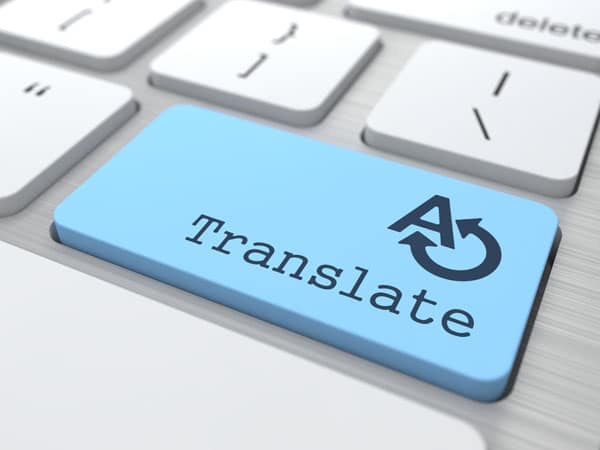The Real Cost of Machine Translation or not to machine, that is the question.

Advanced technology and software have ushered in the era of Artificial Intelligence (AI), and the translations industry was not left untouched by it. Machine translations are becoming more and more popular because they are cheap and fast. But are they really meeting our communication needs?
There are simple machine translations like those on Facebook and other social media. They will give you an idea of what is being said in the other language. It's very conversational and informal, and where the machine translation goes wrong, we can sort of guess and auto-correct using our human common sense. No harm done, because like most things Facebook, we are looking for the general gist of the post, so this short translation works just fine for most of us.
On the next level, we find the more complex machine translation software and crowd-sourcing options, one of the most well-known being Google Translate. These rely heavily on readers submitting, editing and adding verbiage to the repositories of these online resources, aka crowdsourcing. This is generally okay to figure out the meaning of a business e-mail or letter or to communicate informally with a vendor or client in a commonly used language, such as Spanish or French. But if you need to translate a Japanese patent, for example, you may not get what you need. There are several reasons for the shortfalls: a) these translations are done piecemeal (word-for-word or phrase-by-phrase), and b) they are done in a complete vacuum without any context. Therefore, you end up with mistranslations and a lack of accuracy and consistency throughout the document.
Additionally, if you would like to communicate effectively in other languages to market and advertise your products or services, to inform people about important scientific discoveries, or if your text has legal ramifications such as a contract, bylaws or a medical IFU, you might want to consider a human translation, because getting those wrong can cost you much more than the original translation.
So, what now?
The answer is simple. The key to top quality translations is PEOPLE. Human translations are done by real people who are native speakers of the languages they translate into. They often work as a team to translate, proofread, quality check and deliver translations, a process that ensures accuracy, consistency and above all quality. A team of translators and proofreaders may debate together which word to use in any given translation, ensuring there is dialogue and correction as the project progresses. Human translation teams translate documents, websites or campaigns in their entirety, which means phrases and words are reviewed in context. In addition, the documents are interpreted within the appropriate cultural parameters and adapted accordingly, so that the translations sound natural in the target language.
While most translators use CAT tools, aka translation software, it is mainly for building glossaries and translation memories for each specific client. Translation memory captures ways you have said things in the past and applies that knowledge to new documents. In this way, translation agencies help you localize your translations, keep up-to-date on the latest changes in language use, and help you remain cost-effective. This approach leverages technology but makes sure that we do not end up like the poor people on the tower of Babel.
The moral of the story? Since AI is the intelligence exhibited by machines or software and language is a living thing that changes constantly, human supervision and input are required to ensure that your translations are accurate, culturally appropriate, and adapted to the target audience, in other words, that you are exchanging ideas and communicating effectively with other people. While human translation may be a bit more expensive than machine translations, the investment is well worth it. As in fashion, viticulture, the culinary arts and many other fine crafts, it is once again that human touch that ultimately makes the difference.
For all your translation needs, please contact us at www.translingua.com or send an e-mail to nyc@translingua.com/a> or boulder@translingua.com.




























